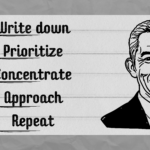They call it a flash fire because the fire happens so fast. That’s what it felt like when the group’s manager asked for feedback on ways management could better support their employees.
With 400 people in the room, you can see how quickly the venting session ramped up and soured the mood in the room. As I sat and listened to the employees share their frustrations, it was clear to me that the management had a hygienic motivation issue. Hygienic motivation comes from psychologist Frederick Herzberg’s Two-Factor Theory (TFT). TFT states employees are motivated by two factors he labels hygienic and intrinsic.
- Hygienic – Factors that are considered standard elements of a job. Job security, salary, fringe benefits, work conditions, good pay, paid insurance, and vacation policies fall into this bucket.
- Intrinsic – Factors related to a person’s intrinsic motivations. These include challenging work, achievement recognition, responsibility, opportunity to do something meaningful, involvement in decision-making, a sense of importance to an organization, life goals, and personal growth. Giving employee appreciation is a great way of celebrating achievement.
Herzberg claims that an employer needs to satisfy hygienic motivators first and foremost; otherwise, they will have a perpetual retention issue, even if they successfully satisfy just the intrinsic motivators. It was clear that the company I worked with didn’t care for their employees’ hygienic motivators. The employees felt their pay needed to be more fair. They didn’t feel their time off was fair. They didn’t feel their work stress level was fair. These are real problems that management needs to address right away. The irony of the situation was that the management had brought me in to focus on the intrinsic motivators for the group. But without dealing with the hygienic motivators, the work I did was just going to be a band-aid solution.
4 Steps to Make Sure You Are Satisfying Your
Team’s Hygienic Motivators:
Ask For Feedback Individually
To avoid a dumpster fire like I experienced, it’s much better to collect feedback individually. This also avoids the issue of groupthink.
Review, Categorize, Prioritize
With a smaller team, take all the individual feedback and review and categorize each request into core ideas. Then divide the list into two groups: tackle within the next three months or maybe deal with it at some point in the future. Don’t delete any idea, no matter how crazy.
Report Back
Share the prioritization of the feedback with your employees and be very clear on which actions you plan to tackle in the next three months. Also, make it clear that no ideas were deleted and will be reviewed quarterly.
Review Quarterly
After every three months, take some time to review the “future list” that you created and see if there are any items that you’d like to tackle over the next three months. This is also a good time to solicit more feedback from your team and follow steps 1-3 from above.
Addressing the hygienic motivators in a workplace is not just a step toward employee satisfaction; it’s a foundational necessity for any thriving organization. The flash fire of dissatisfaction I witnessed highlighted the critical need for management to focus on these essential elements. By following a systematic approach to understanding and addressing these concerns – seeking individual feedback, categorizing and prioritizing responses, transparently reporting back, and regularly reviewing progress – leaders can prevent the kind of eruption seen in the meeting room. This approach quells immediate fires and lays the groundwork for fostering intrinsic motivation and long-term employee engagement. Remember, the path to a truly motivated and satisfied workforce starts with the basics: fair pay, reasonable work conditions, and a genuine respect for the employees’ needs. This is not just about putting out fires but building a resilient, positive, and productive workplace culture.




